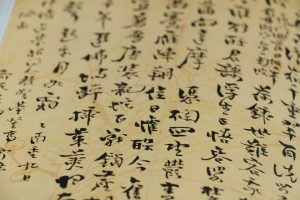Mandarin and Cantonese, Do You Need to Know Both?
 Sure, Mandarin and Cantonese are both dialects of the Chinese language. But they are distinctly different. Much more different than American English and British English. A Mandarin speaker would not even understand someone speaking Cantonese and vice versa.
Sure, Mandarin and Cantonese are both dialects of the Chinese language. But they are distinctly different. Much more different than American English and British English. A Mandarin speaker would not even understand someone speaking Cantonese and vice versa.
Mandarin is spoken in most of mainland China, as well as Taiwan and Singapore. Mandarin is the first language of almost 70% of the country. You’ll hear it primarily in the northern and central parts of China, including Beijing.
People speak Cantonese in Hong Kong, Macau, and the province of Guangdong. Cantonese is spoken by about 5% of the Chinese population. You’ll hear it mainly in the southeastern part of the country.
And while Mandarin and Cantonese are the most popular, there are actually five main Chinese dialects. The others are Taiwanese, Shanghainese, and Hakka. You’ll also hear residents speaking their regional languages, such as Tibetan or Mongolian, throughout the different regions of China.

The official language of China is Mandarin. That’s what children learn in school. That’s what you’ll hear on national TV and radio.
So if you’re doing business in China, you’ll definitely need to know Mandarin.
If you’re working in Hong Kong though, you’re going to benefit from speaking Cantonese and NOT Mandarin. Because many people in Hong Kong hold resentment toward the Chinese government for attempting to make people speak Mandarin, it’s actually better you speak English in Hong Kong than Mandarin.
One of the biggest challenges to learning these languages is the tonality. That means one word has many meanings depending on the pronunciation and inflection. Mandarin has five tones. Cantonese has nine tones.
When learning either dialect, you’ll find many words sound extremely similar. Pronunciations rely on recognizing small and complex details. The tones are crucial to conveying your meaning.
If you decide it makes sense to learn both Mandarin and Cantonese, most people recommend learning Mandarin first before conquering another Chinese dialect.
 It’s interesting that both dialects use pretty much the same characters for writing though. This is because the characters share the same roots. While the traditional characters used in Cantonese are a bit more complex than the more simplified characters of Mandarin, someone who speaks Mandarin could write something that a Cantonese speaker would be able to read.
It’s interesting that both dialects use pretty much the same characters for writing though. This is because the characters share the same roots. While the traditional characters used in Cantonese are a bit more complex than the more simplified characters of Mandarin, someone who speaks Mandarin could write something that a Cantonese speaker would be able to read.
However, as you probably know, idioms and expressions are quite different in different languages. The same holds true for Mandarin and Cantonese. So even if someone from Hong Kong is able to read something written in Mandarin, they might not “get” the meaning.
When talking to a Chinese audience, the first language for translating content is Mandarin. But because Mandarin doesn’t use verb tenses conveying past, present or future, there are many opportunities for mistakes when translating between English and Chinese. And as already mentioned, intonation plays a much larger role in determining meaning.
Translating your marketing messages, educational information, or legal documentation is not a job for amateurs. When you need to localize your digital or printed materials for China, make sure you hire a company that will ensure the translation is regionally appropriate with accurate insight and meanings.
Credit for the Chinese umbrella pic: Image by Peggy und Marco Lachmann-Anke from Pixabay
Credit for the Chinese house pic: Image by Free-Photos from Pixabay
Credit for the Chinese characters pic: Image by quillau from Pixabay
Category: Translation Services








